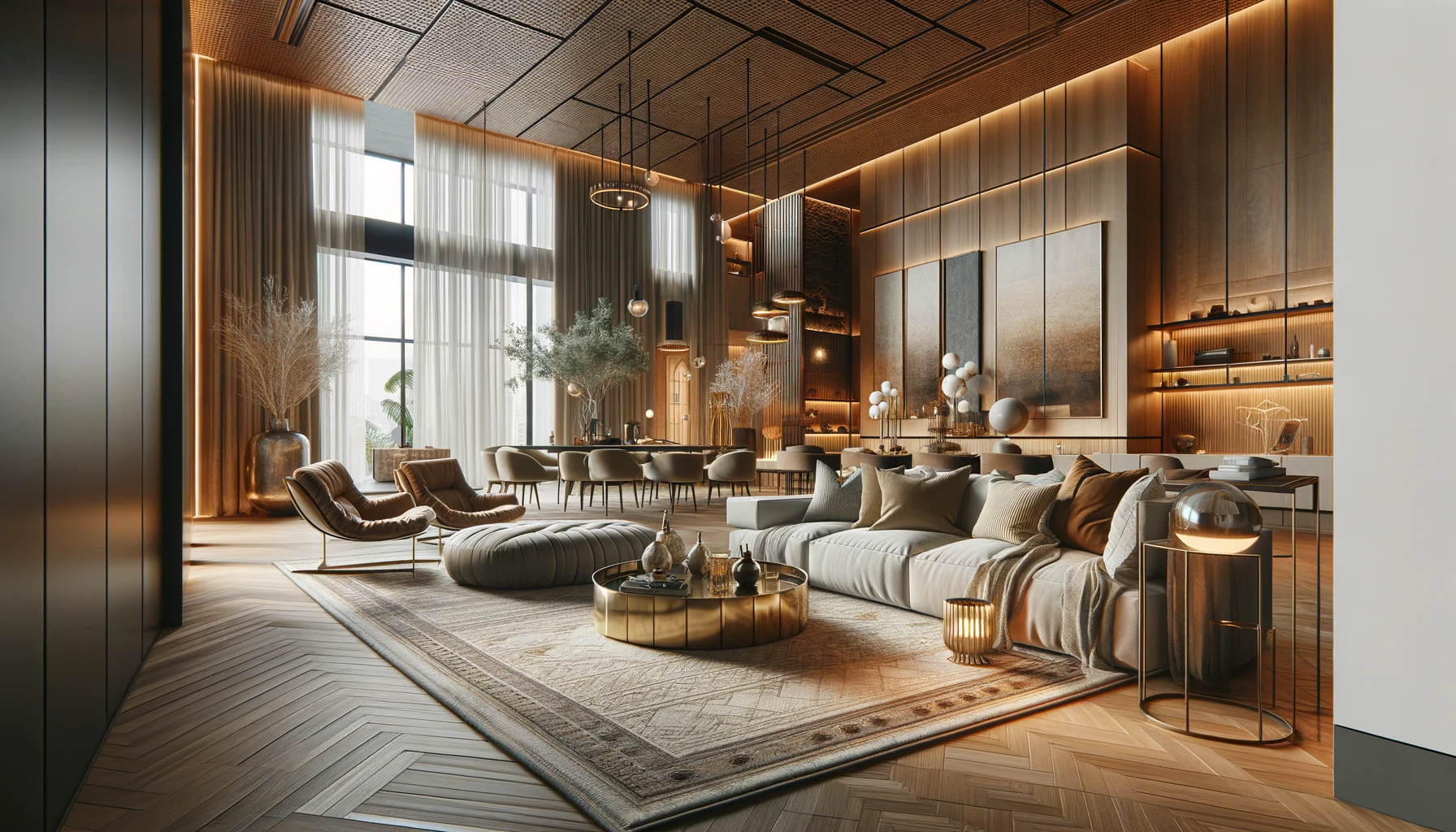Introduction
Customized textures and materials in modern fit-outs define its visual personality.
To ensure stylish cohesion these are also mixed with various surfaces.
Within the domain of interior design, the combination of materials and textures merge to form visually captivating spaces.
Not only this, these are also considered functional as far as adaptation is concerned.
Modern fit-outs are known for their emphasis on functionality, clean lines, and minimalistic aesthetics.
As a result, these combinations of textures and materials in modern fit-outs offer a unique canvas to explore endless possibilities.
This blog provides information regarding practical applications, principles, and techniques that elevate your modern design to the next level.
Understanding the Role of Textures and Materials
Textures:
The tactile qualities of a surface within a fit-out are known as textures.
These influence how a space appears and feels.
When textures and materials in modern fit-outs combine, they impact a room’s overall ambiance.
These surfaces may appear organic, smooth, rough, and polished.
Materials:
The role of material is that of a substance used in the decoration or construction of a living space.
When combining the textures and materials in modern fit-outs together, you can improve its functional and aesthetic features and design.
The Importance of Balance
You can achieve a harmonious blend with a combination of textures and materials in modern fit-outs.
However, if you make use of an excessive material or texture particularly, you can create a monotonous or visually overwhelming environment.
Hence, it is necessary to strike a balance between complementary and contrasting aspects.
Contrasting Textures:
The opposite textures include soft fabrics against metallic accents or glass against rough-shaped wood.
These contrasting textures and materials in modern fit-outs help create depth and visual interest.
Complementary Textures:
Combine the textures and materials in modern fit-outs that share similar qualities.
These include the coolness of marble and glass or the warmth of leather and wool.
As a result, it leads to fostering a sense of refinement and refinement.
Key Considerations for Mixing Textures and Materials in Modern Fit-outs
Functionality:
Functionality is the first thing to consider when you choose textures and materials in modern fit-outs.
This dictates the intended space use with appropriate material choices.
For instance, high-traffic areas include easy-to-clean and durable surfaces.
On the other hand, relaxation zones use softer textures as a more suitable alternative.
Aesthetics:
A space’s desired atmosphere should guide the selection of textures and materials in modern fit-outs.
This should lead to a sophisticated and sleek ambiance with a combination of polished stone, glass, and metal.
At the same time, it also helps achieve an inviting and cozy feel with warm woods and natural fibers.
Color Palette:
The color palette is the third important aspect of textures and materials in modern fit-outs.
Coordinating colors helps improve the visual harmony of a living space.
On the other hand, you can achieve dramatic effects with the help of contrasting colors.
Scaling and Proportion:
The fourth aspect of textures and materials in modern fit-outs is scaling and proportion.
In a customized fit-out, the proportion and size of the elements in a space feature the interaction of materials and interaction.
You can add subtle interest in a room with smaller textures, whereas, large-scale textures may dominate an entire living room.
Combining Diverse Options for Material Combinations
Metal and Wood:
Metal and wood are among the classiest examples of combinations of textures and materials in modern fit-outs.
To achieve a sophisticated and timeless look, this classic pairing works wonders in creating a sophisticated and timeless appearance.
The coolness of metal combines with the warmth of wood to complement each other, creating an inviting and balanced atmosphere.
Stone and Glass:
Stone and glass in the textures and materials in modern fit-outs lead to a modern and luxurious outlook.
The reflection of glass blends well with the natural beauty of stone beautifully contrasting with transparency.
Textiles and Leather:
Textiles and leather textures and materials in modern fit-outs add comfort and warmth to a space.
Soft textiles include linen or velvet while durability and opulence are added as a result of leather included in it.
Concrete and Wood:
The combination of concrete and wood in textures and materials in modern fit-outs is an unexpected one.
It is responsible for creating industrial and raw aesthetics.
The natural warmth of the wood softens the rough texture of the concrete.
Practical Application of Textures and Materials in Modern Fit-Outs
Living Room:
Combine a glass coffee table with a sleek leather sofa and a textured wool rug.
This combination of textures and materials in modern fit-out aims to create an inviting and sophisticated space.
Use a fireplace mantel or shelving to introduce wooden accents.
Bedroom:
A bedside table made of natural wood, soft linen bedding, and a textured headboard combine to create a serene atmosphere.
You can also add velvet cushions and a silk throw within the textures and materials in modern fit-out to add a touch of luxury.
Kitchen
The kitchen is another crucial place that features textures and materials in a modern fit-out.
These include wood, stainless steel, stone, and glass.
Conclusion
The combination of textures and materials in modern fit-out makes the living room functionally exceptional and visually stunning.
The designers should craft spaces with a careful selection of materials and a combination of colors.
Hence these textures and materials in modern fit-out can craft sophistication and harmony to craft spaces.
By willing and experimenting this unexpected combination may lead to success.
Also Read
Top Trends In Luxury Home Interiors Fit Out For 2024
Organization Made Easy: DIY Fit-Out Strategies for Clutter-Free Living
